[US production filmed in the Philippines]
Director Monte Hellman Story Richard A. Guttman Screenplay Richard A. Guttman, John Hackett Producer Fred Roos Executive Producer [uncredited] Robert L. Lippert Associate Producer Ronald Remy Cinematography Mars Rasca Music Mike Velarde Editors Fely Crisostomo, [uncredited] Monte Hellman Sound Juanito Clemente Production Manager Nilo Saez Makeup Artist Nita Sol Cruz Camera Operator Ricardo Remias Production Assistant Walter Phelps
Cast Jimmie Rodgers (Lt. Craig), Jack Nicholson (Burnett), John Hackett (Jersey), Annabelle Huggins (Maria), Conrad Maga (Paco), Johnny Monteiro (Ramundo), Joe Sison (Japanese Captain), Henry Duval (Garde), Ben Perez (Mayor Arming Parillo), Vic Uematsu (Japanese Prisoner)
WAR
NOTES by Andrew Leavold: Filmed back-to-back with another feature directed by Hellman and written by and starring Jack Nicholson, Flight To Fury (1964), reviewed HERE. My interview with Monte Hellman about the making of both films appears HERE.
REVIEW by Andrew Leavold
By the time Jack Nicholson appeared in two movies shot back-to-back in the Philippines in 1964 by maverick director Monte Hellman, he was already an aspiring writer, not to mention hungry actor, and had collaborated with Hellman a number of times. Most notable was the notorious Roger Corman quickie The Terror (1963) on which a total of five directors worked, with only Corman receiving credit. Executive Producer Robert Lippert had seen The Terror and, stunned by its sheer economy but completely in the dark over which filmmaker did what, asked for either Francis Ford Coppola or Monte Hellman to make his next two pictures in South East Asia. Coppola was busy, so Hellman got the ticket; he took a slow boat to Manila alongside a busy Jack Nicholson who was hammering out the script for Flight To Fury, and John Hackett attempting to nail the second feature Back Door To Hell. Of course Coppola would end up in the Philippines recreating a small corner of hell with Apocalypse Now, but that’s another story altogether…
Under the watchful eye of Lippert’s producer Fred Roos, Hellman shot both films starting with Back Door To Hell with, predictably, very little money, a back-breaking schedule and the inherent chaos of the Philippines to contend with. Not surprisingly Hellman fell deathly ill with an unnamed tropical malady and was unable to supervise the first cut of Back Door… while almost dying daily on the set of Flight To Fury. As a result, Hellman has little to say about his low-rent Philippines adventures, but it does explain the grit, grime and purposeful nihilism in every frame. Add Nicholson’s memorable dialogue and a growing awareness of his strengths as an actor, and you have two perfect low-budget, almost no-budget, micro-masterpieces.
Hellman doesn’t even waste the credits, plunging straight into the action. Lieutenant Craig (Jimmie Rodgers) is a US Army Intelligence officer leading a three-man squad towards a Japanese radio tower. The mission: broadcast vital information to the invading forces about to recapture the Philippines. Compared to his forceful appearance in Flight To Fury, Jack Nicholson is sorely wasted here as Rodger's second banana playing the sardonic Burnett, a foil for the comparatively soulless killing machine Sergeant Jersey (co-writer John Hackett). Naturally as Hellman’s two main writers they get the most meaningful exchanges…
Jersey: "We're all gonna die anyway - tomorrow, next week, thirty years from now. Did that little thought ever penetrate your thick skull?"
Burnett: "Yeah, once when I was a boy, but naturally I dismissed it as being too outrageous."
The Americans team up with Paco (Conrad Maga), an embittered Filipino resistance fighter whose survival instincts lead him to mistrust both sides; tired of sacrificing his men for his liberators, he's introduced as the man who has interrogated Craig's contact to death, just in case... In fact, torture is Paco’s preferred modus operandi, as evidenced by his treatment of the captured Japanese Captain played by Joe Sison (a well-worn Filipino goon, also in Eddie Romero and George Montgomery exports) and his terrified grunt of an underling (Vic Uemetsu). "Interrogating a prisoner is like cooking a goose..." says Paco, almost salivating at the prospect; he’s a lot more comfortable with the dirty business of torturing and killing than the closet humanist Craig. Into this circus of cynics waltzes classic Filipino kontrabida Johnny Monteiro in a gloriously over-the-top performance as Raymundo, a bandido posing as a freedom fighter who is more concerned with bargaining for the Americans’ radio than the liberation of his country.
Stripped of most of its military hardware and pyrotechnics, Back Door… is more a claustrophobic deconstruction of a war film, an exercise in rapid-fire montage filled with simple, cost-effective visuals and quiet flourishes, such as an incredible 360-degree pan from the Japanese Captain's point of view, and a modest character study of men pushed to the brink. The tacked-on newsreel footage towards the end showing the liberation of Luzon, inserted against Hellman’s wishes by the distributor to make the film more “war-like”, is gratuitous and unwelcome. Hauntingly pretty Filipina actress Annabelle Huggins adopts a perpetually pained expression as Paco’s love-worn partner Maria, but when you read about how her brief movie career in the mid-Sixties came out the publicity surrounding her infamous rape and kidnap case (details are on the Video 48 blog here) only a year before Back Door… was shot, it leads you to suspect she’s not really acting at all. Also surprisingly good in his role as Lieutenant Craig is Jimmie Rodgers, the easy-going folk-rock singer (and, according to some sources, Back Door…’s co-financier) who had a mildly successful career until a drunken incident with a policeman in 1967 left him with a fractured skull and a legacy of brain-related complications. Hellman himself would eventually recover from his harrowing Philippines experiences and collaborate with Nicholson once again on two westerns, Ride In The Whirlwind and The Shooting (both 1967), which can only be described as “existential". Frankly, the same term can be applied to Back Door To Hell.
OTHER REVIEWS listed on the IMDB
...and unknown actors (please contact us if you can identify them)
THEATRICAL
UK – released as a second feature, 1967-69
AUSTRALIA – released as a second feature, September to October 1965
OTHER TERRITORIES [unconfirmed, but listed on the IMDB]: In West Germany as “Hintertür Zur Hölle”, in Spain as “Escapatoria Al Infierno”, in Peru as “Comando Suicida”, in Brazil as “Guerrilheiros do Pacífico”, In Poland as “Tylnymi drzwiami do piekła”, in Bulgaria as “Задната врата към ада”, and in the Soviet Union as “Задняя дверь в ад”
DIGITAL
AUSTRALIA – DVD release via 20th Century Fox
SWEDEN – DVD release via Noble [in English with several Scandinavian subtitles]





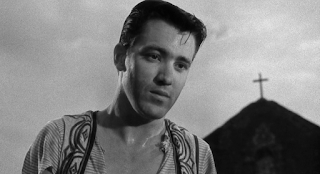


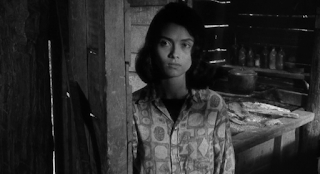




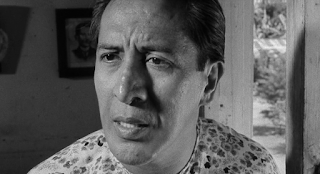






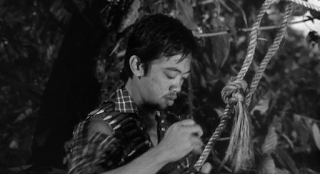











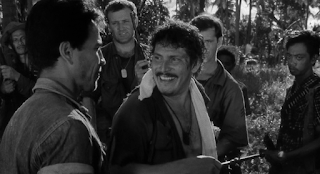



















No comments:
Post a Comment